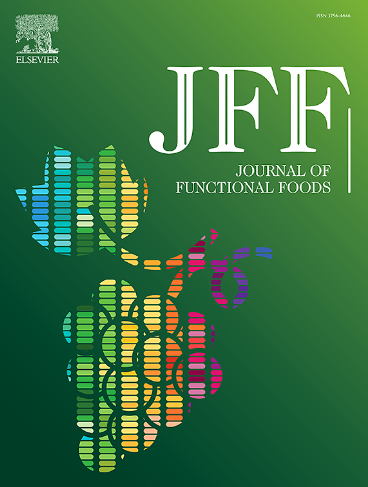The role of SREBP-1c signaling pathway in osteoblast pyroptosis and the protective effect of D-pinitol
IF 3.8
2区 农林科学
Q2 FOOD SCIENCE & TECHNOLOGY
引用次数: 0
Abstract
Preclinical animal studies and human trials have indicated that D-pinitol may have multiple beneficial properties, such as regulating lipid metabolism and anti-osteoporosis. The purpose of this research was to use in vivo and in vitro methods to explore lipid-induced pyroptosis in osteogenic differentiation and osteoporosis development, while also examining DP's regulatory role in preventing osteoblast pyroptosis. Results demonstrated that daily oral administration of D-pinitol (DP) at a clinically relevant dose significantly ameliorated bone microarchitecture deterioration in apolipoprotein A1-deficient (ApoA1−/−) mice. DP increased Runx2 and OST expressions, and enhanced the bone-mineralized nodules production in ox-LDL-treated MC3T3-E1 cells. DP also lowered pyroptosis-related indicators such as NLRP3, Caspase-1, GSDMD, GSDMD N-terminal (GSDMD-NT), Cleaved caspase-1, and IL-1β. Mechanistically, we found that DP inhibited NLRP3-mediated pyroptosis by downregulating SREBP-1c and altering p53 and Galectin-1 signaling. Our findings indicated that SREBP-1c is involved in lipid metabolism disorder-induced activation of the NLRP3 and ultimately results in osteogenic pyroptosis. DP could inhibit the SREBP-1c pathway to protect osteoblasts, thereby ameliorating osteoporosis.

SREBP-1c信号通路在成骨细胞焦亡中的作用及d -蒎醇的保护作用
临床前动物研究和人体试验表明,d -蒎醇可能具有多种有益特性,如调节脂质代谢和抗骨质疏松症。本研究的目的是通过体内和体外方法探讨脂质诱导的焦亡在成骨分化和骨质疏松发生中的作用,同时研究DP在预防成骨细胞焦亡中的调节作用。结果表明,每日口服D-pinitol (DP),达到临床相关剂量,可显著改善载脂蛋白a1缺陷(ApoA1−/−)小鼠骨微结构恶化。在ox- ldl处理的MC3T3-E1细胞中,DP增加Runx2和OST的表达,并促进骨矿化结节的产生。DP还降低了NLRP3、Caspase-1、GSDMD、GSDMD n端(GSDMD- nt)、Cleaved Caspase-1和IL-1β等与热降解相关的指标。在机制上,我们发现DP通过下调SREBP-1c和改变p53和半乳糖凝集素-1信号传导来抑制nlrp3介导的焦亡。我们的研究结果表明,SREBP-1c参与脂质代谢紊乱诱导的NLRP3激活,并最终导致成骨性焦亡。DP可抑制SREBP-1c通路,保护成骨细胞,从而改善骨质疏松症。
本文章由计算机程序翻译,如有差异,请以英文原文为准。
求助全文
约1分钟内获得全文
求助全文
来源期刊

Journal of Functional Foods
FOOD SCIENCE & TECHNOLOGY-
CiteScore
9.60
自引率
1.80%
发文量
428
审稿时长
76 days
期刊介绍:
Journal of Functional Foods continues with the same aims and scope, editorial team, submission system and rigorous peer review. We give authors the possibility to publish their top-quality papers in a well-established leading journal in the food and nutrition fields. The Journal will keep its rigorous criteria to screen high impact research addressing relevant scientific topics and performed by sound methodologies.
The Journal of Functional Foods aims to bring together the results of fundamental and applied research into healthy foods and biologically active food ingredients.
The Journal is centered in the specific area at the boundaries among food technology, nutrition and health welcoming papers having a good interdisciplinary approach. The Journal will cover the fields of plant bioactives; dietary fibre, probiotics; functional lipids; bioactive peptides; vitamins, minerals and botanicals and other dietary supplements. Nutritional and technological aspects related to the development of functional foods and beverages are of core interest to the journal. Experimental works dealing with food digestion, bioavailability of food bioactives and on the mechanisms by which foods and their components are able to modulate physiological parameters connected with disease prevention are of particular interest as well as those dealing with personalized nutrition and nutritional needs in pathological subjects.
 求助内容:
求助内容: 应助结果提醒方式:
应助结果提醒方式:


